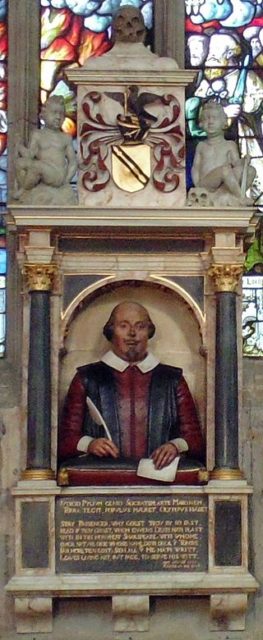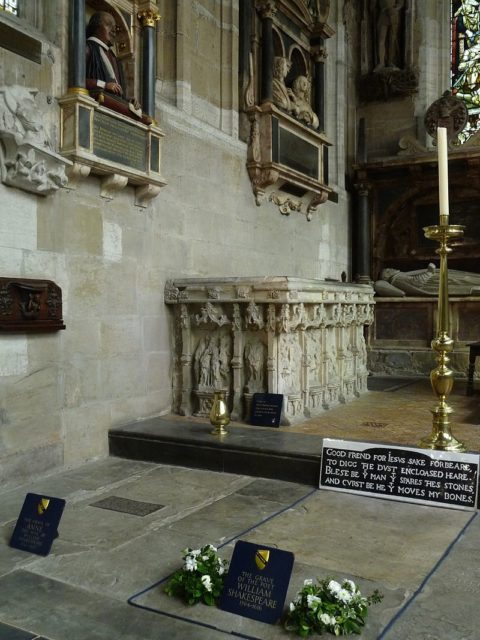Archaeologists have been able to use the new technology today to look under the flooring surface at what is believed to be Shakespeare’s last resting spot.
The Holy Trinity Church in Stratford-upon-Avon is where the Bard and his wife are supposedly buried.

Back in 1879, there was a story published that has always been dismissed as fiction– that thieves had stolen Bard’s skull from his grave site. But archaeological evidence from the radar results seems to support the legend that the skull of the Bard is indeed missing. Another clue that the skull may no longer be in the grave is that the floor above the head of the grave had begun to sunk, to the point where repairs were desperately needed.
The actual graves of Shakespeare and his wife are only one meter deep; experts think that the bodies were wrapped in shrouds and placed directly into the dirt rather than first being put in coffins. Radar revealed an area of disturbed ground where the skull should have been.
After the results of the grave study had been revealed, the same scientists were given access to a skull in St. Leonard’s Church, only 17 miles from Strafford. The skull there was thought to have been of the Bard. However, a detailed laser scan has revealed it to be a skull from a woman who died in her seventies, thus confirming that it wasn’t Bard’s skull after all.

So it appears that no one knows for sure about Bard’s burial site nor if there is a skull there, but there are many theories and legends about it. The scientists are very excited that they were allowed to use this non-invasive radar technique to study the grave of someone so famous. The results will spark a myriad of theories and discussions about the Bard for many more years.
The legend of the missing skull is thought to have started in 1794 after a reward was posted by Horace Walpole, an English art historian, to be given to anyone who would bring him the Bard’s skull. The reward offered was three hundred pounds. According to Worchester Life, Walpole didn’t actually pay even though he was presented with a skull.

The legend continued to grow after two articles appeared five years apart claiming that Shakespeare’s vault was robbed by Frank Chambers, who left the skull in a Worcestershire church. This led to the legend that the skull at St. Leonard’s belonged to the Bard, Mail Online reported.
The Vicar of the Holy Trinity Church is not convinced that the skull is missing as he feels there is not enough evidence to prove this. There are no plans for the grave to be exhumed in the near future to confirm иф the legend is true or not.
